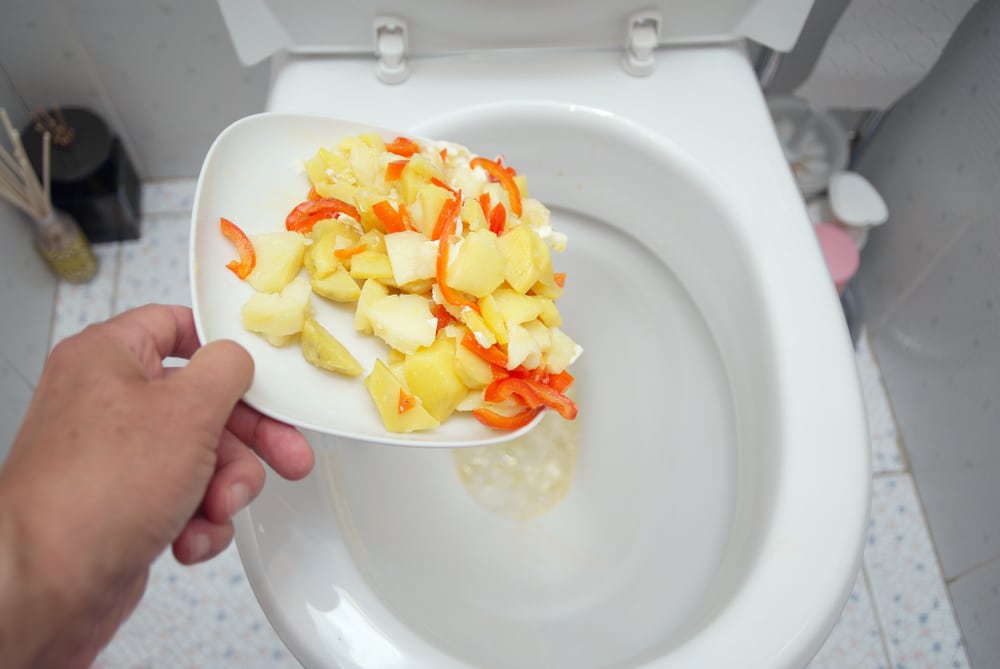On this page in the next paragraphs you can get lots of first-rate guidance concerning What Can Happen If You Flush Food Down the Toilet?.

Introduction
Many individuals are frequently faced with the issue of what to do with food waste, specifically when it involves leftovers or scraps. One typical concern that develops is whether it's alright to purge food down the toilet. In this write-up, we'll explore the reasons why individuals could take into consideration flushing food, the consequences of doing so, and alternate approaches for appropriate disposal.
Reasons why people may consider flushing food
Lack of understanding
Some people might not know the prospective damage brought on by flushing food down the toilet. They might incorrectly believe that it's a harmless practice.
Benefit
Flushing food down the toilet might seem like a fast and simple option to getting rid of unwanted scraps, specifically when there's no neighboring trash can offered.
Laziness
In many cases, people may merely select to flush food out of large negligence, without considering the consequences of their actions.
Repercussions of flushing food down the commode
Ecological influence
Food waste that ends up in rivers can contribute to air pollution and harm marine communities. Additionally, the water utilized to flush food can stress water sources.
Plumbing issues
Purging food can bring about clogged pipes and drains, creating costly pipes repair work and inconveniences.
Types of food that need to not be purged
Fibrous foods
Foods with coarse structures such as celery or corn husks can get entangled in pipes and create blockages.
Starchy foods
Starchy foods like pasta and rice can take in water and swell, resulting in clogs in pipes.
Oils and fats
Greasy foods like bacon or food preparation oils must never ever be flushed down the bathroom as they can strengthen and trigger clogs.
Proper disposal techniques for food waste
Making use of a waste disposal unit
For homes geared up with waste disposal unit, food scraps can be ground up and purged via the pipes system. Nonetheless, not all foods appropriate for disposal in this manner.
Recycling
Certain food packaging products can be reused, reducing waste and minimizing ecological impact.
Composting
Composting is a green method to deal with food waste. Organic materials can be composted and made use of to improve soil for horticulture.
The value of appropriate waste management
Reducing environmental injury
Proper waste monitoring methods, such as composting and recycling, aid lessen pollution and protect natural deposits for future generations.
Securing pipes systems
By staying clear of the practice of flushing food down the toilet, home owners can avoid expensive plumbing fixings and keep the stability of their plumbing systems.
Conclusion
Finally, while it may be appealing to purge food down the toilet for ease, it is necessary to recognize the prospective effects of this action. By adopting correct waste monitoring practices and throwing away food waste properly, people can add to healthier pipes systems and a cleaner atmosphere for all.
FLUSH FOOD DOWN THE TOILET?
FLUSHING FOOD CAN CAUSE BLOCKED DRAINS IN YOUR HOME
All of the plumbing fixtures in your home are connected to the same sewer pipe outside of your home. This outdoor sewer pipe is responsible for transporting all the wastewater from your home to the Council sewer mains. Even small pieces of food that go down the kitchen sink can cause problems for your sewer. It should therefore be obvious that flushing larger bits of food, such as meat, risks a clog in either the toilet itself or the sewer pipes. Flushing greasy food is even more problematic because oil coagulates when it cools, coating the interior lining of your pipes.
THE TOILET IS NOT A BIN
Food isn’t the only thing that people shouldn’t be flushing down the toilet. People use the toilet to dispose of all kinds of things such as tampons, makeup wipes, dental floss, kitty litter and even underwear. Water goes to great lengths to educate residents about the high costs and stress placed on wastewater treatment systems simply from people flushing the wrong stuff down the toilet. It costs taxpayers millions of dollars each year, and homeowners thousands in blocked drain repairs.
FLUSHING FOOD IS A WASTE OF WATER
Flushing food is a waste of our most precious resource - water. In June this year Level 1 water restrictions were introduced to protect water supply from drought conditions. Much of New South Wales continues to be affected by prolonged drought with recent figures revealing up to 97 per cent of the state remains in drought. Depending on whether you have a single or dual flush toilet, every single flush uses between five and 11 litres of water. In the current climate this is a huge amount of water to be wasting on flushing food that should be placed in the bin (or better yet, the compost).
https://www.jabplumbingsolutions.com.au/blog/can-you-flush-food-down-the-toilet

I came across that page about Think Twice Before Flushing Food Down Your Toilet while perusing the internet. Liked our piece? Please quickly share it. Help somebody else discover it. Thanks so much for your time invested reading it.
Book Appointment